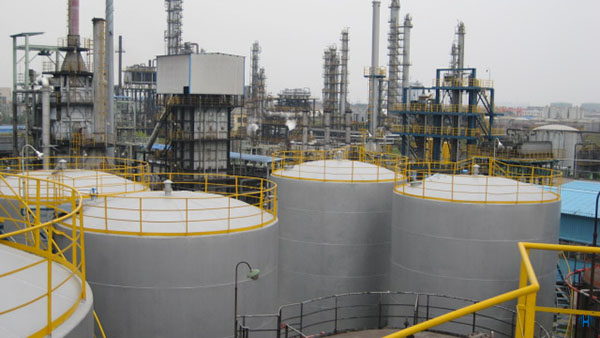Tri-n-butyl citrate is a commonly used raw material for organic synthesis and has a wide range of applications in chemical production. It is commonly used in paint, dye, ink, and other industries. To ensure the control and safety of the production process, it is necessary to measure the level of tri-n-butyl citrate in storage tanks.
However, due to the special nature of tri-n-butyl citrate, the level measurement may face some challenges. In this paper, we will introduce the difficulties in measuring the level of tri-n-butyl citrate storage tanks and illustrate how to solve these problems with an actual radar level meter measurement case.

The level measurement of the tri-n-butyl citrate storage tanks faces the following difficulties. Viscosity: tri-n-butyl citrate is a viscous liquid with high viscosity, which makes it impossible for traditional measuring equipment to measure the level accurately. Gas generation: Tri-n-butyl citrate tends to generate gas during storage, and the presence of gas will affect the accuracy of measurement results.
Corrosiveness: Tributyl citrate is corrosive to some materials, and conventional level measuring equipment may not be able to withstand its corrosive effect. Although there are some difficulties in the measurement of citric acid tri-n-butyl ester storage tank level, the radar level meter can overcome these difficulties.
A chemical company with multiple tanks of tri-n-butyl citrate requires accurate and safe level measurement to ensure the stability of the production process.
Conventional-level measurement equipment was unable to accurately measure the level of the Tributyl Citrate tanks and was susceptible to the viscosity and corrosiveness of the liquid. In view of the characteristics of citric acid tri-n-butyl ester storage tank level measurement, the plant chose a radar level meter to measure.

Radar level meter is a non-contact level measurement technology with the following advantages, non-contact measurement: radar level meter adopts wireless radar technology, which can transmit and receive signals through the liquid surface, without direct contact with tri-n-butyl citrate, avoiding the influence of liquid viscosity and corrosiveness on the measurement results in traditional level measurement.
High-precision measurement: The radar level meter adopts a microwave signal for measurement, which has high precision and stability, and can achieve millimeter-level measurement precision. Corrosion resistance: To address the corrosiveness of tri-n-butyl citrate, the level probe and main part of the radar level meter are selected with corrosion-resistant materials to ensure that the equipment can work stably for a long time and resist the corrosion of tri-n-butyl citrate.
Gas suppression function: In order to solve the problem of gas generated in the storage tank of tri-n-butyl citrate, the radar level meter is equipped with a gas suppression function.
This function can detect the gas above the liquid level and suppress it through the algorithm to ensure the measurement results are not disturbed by the gas and improve the accuracy of the measurement.

Through the application of a radar level meter, the difficult point of level measurement in the storage tank of tri-n-butyl citrate was successfully solved, which improved the efficiency and safety of the production process.
This actual case fully demonstrates the superior measurement capability of radar level meters in the chemical industry and provides a reliable solution for level monitoring.
